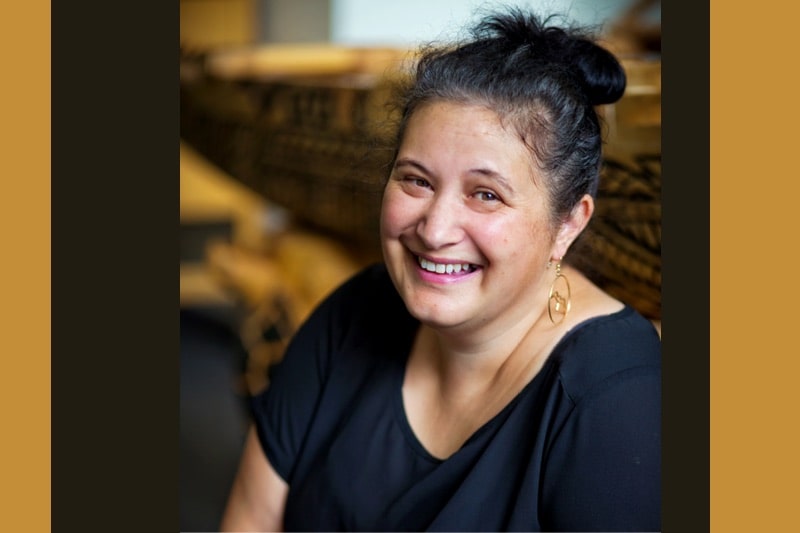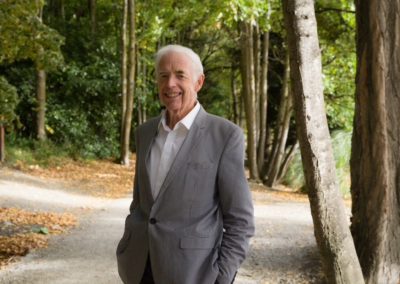When we last checked in with Dr Justine Camp (Kāi Tahu, Kāti Mamoe, Waitaha), she was in the middle of her PhD, conducting trials, collecting data and refining her whānau health compass. Now her project – which was supervised by Assoc Prof Anne-Marie Jackson (Ngāti Whātua, Ngāpuhi, Ngāti Kahu o Whangaroa, Ngāti Wai) and funded by Brain Research New Zealand – is completed and Justine shared her findings with us.
For her PhD project, Justine aimed to transfer the mātauranga and tikanga that underpins navigation to a whānau health context. For the first step, she interviewed master navigators and experts in tikanga Māori. “The main theme that emerged was connectedness,” she explains, “ – and the tool used in navigation that facilitates connectedness is a star compass.” Star compasses, centred around constellations and their movements across the sky, have been used by navigators to voyage the Pacific Ocean for centuries. Justine adapted this tool to create a Māori health model for whānau across the lifespan and generations.
She initially trialled the compass with 25 whānau from her hapū at Puketeraki marae. They recorded different indicators, such as sleep patterns, food and water intake, the moon cycle, in a diary. Over time, the participants could see patterns and connections with the environment emerge, for example, the phases of the moon.
One part of the compass was the wairua whare, which tracked indicators such as memory, mood, and whakanoa. “One of our kaumātua keeps saying that she is getting dementia. I wanted to show her that her ageing brain is normal – and that in fact, she is very onto it,” Justine says. “Seeing how her memory was tracking over time helped show that there are cycles – for example, during certain moon phases, people tend to be a bit more forgetful. Knowing this gave whānau peace of mind.”
After the initial trial, Justine interviewed whānau to gain feedback and refine the compass. She then followed up with a second trial of the model, where one indicator was changed, and analysed all the daily data generated by the participants.
The interviews and data analysis allowed Justine to identify five components of connectedness as the underpinning tools of her project: Maramataka (the Māori lunar calendar), whakapapa (genealogy), pūrākau (myths), tikanga (customs), and way-finding. Justine explains, “I have interpreted way-finding as connectedness and connectedness as way-finding. The compass is a tool that can assist whānau to way-find their pathway to enhanced health and wellbeing.”

Justine also found that the tools whānau used for wellbeing aligned with tikanga in ceremonies used to whakanoa, which she describes as transition. The four main ones she identified were wai (including blue space), karakia (including meditation, reading, gaming and music), kai and time. Both separately and together, they form everyday transition strategies for wellbeing.
“Whānau wellbeing indicators improved when they were actively using these transitions,” Justine explains. One whānau found that their daily indicators improved when they went to their oldest member’s home near the beach. It was partly due to brining the four generations together, as well as being in that environment. They all differed in how they interacted with the blue space: One would swim daily, others would play on the beach and one reported even just driving past the ocean was good for them.
What motivated Justine most about her project was the value whānau gained from using the health compass: “Obviously, I wanted the model to work, but I didn’t expect people would make such big and positive changes because of it!” She was also excited to see some interesting data emerge, for example, how the moon impacts our sense of wellbeing – even more so than the weather!
The feedback from whānau was overwhelmingly positive: The compass improved communication, transformed how they looked after their wellbeing, and served as a tool of connectedness. To push the health compass further, Justine is looking at funding opportunities to create a digital version of her health compass, to make it a bit easier to use. The navigators she worked with for the project are also interested to work with her on a modified version of the compass that the waka crew could use while out at sea.
In the meantime, Justine is working as a Research Fellow and Co-Principal Investigator for the Better Start National Science Challenge. “Our project is called Moemoeā. We are looking at how sleep settles the wairua, with the aim to develop a Māori sleep settling programme.” There are Māori and Pacific-led streams of the project, and Justine and her colleagues are creating the settling components for a factorial trial.
Justine is also working on new models of care for the new Dunedin Hospital. Part of that is installing wai touch points throughout the buildings, which will allow people to access wai and karakia throughout the whole complex.
Her current work is, in a way, reminiscent of her PhD and aligns with the common thread underpinning all of her research work, as Justine says: “I’m looking at our traditions and knowledge, and try to repackage or re-create it for today’s contexts – whether that is sleep, connectedness, or whānau ora.”



